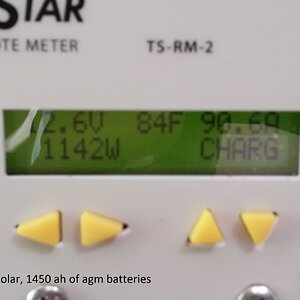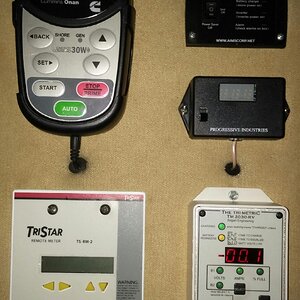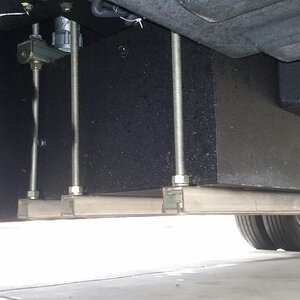Unless his house has more than one catastrophic fuse…or the house disconnect has fried…I’m unaware of a way a portion of the house is dc powered and another part is not. It’s easy to trace with a voltmeter… if you know the wiring route. I can only speak of my Ventana…but the DC power flows…
Battery >> catastrophic fuse in battery compartment >> (behind cord reel) meets one side of the house disconnect latching relay (cascade of wires piggybacking on same terminal going to a couple of self-resetting dc breakers and a fuse panel for “continuous battery power” branch circuits. The other side of the house disconnect latching relay is only hot when the use/store switch has latched the relay in the connected position. If that side is hot…it has a cascade of wires on that terminal which go to a handful of self resetting breakers and also another separate fuse block which is designated as disconnect battery powered…as these are what loose power when the salesman switch is in the store latched position. I keep saying latched because this relay, unlike others…doesn’t need power to a coil to hold it in a particular position. It only needs a momentary flash of power to energize a coil to polarize it…the polarization causes it to move open or closed..,but once the power has stopped..lathe relay stays mechanically latched in that position. Your disconnect battery powered fuse block has two rather large fuses…and these provide power to the distribution fuse block in the half bath cabinet…and those include a lot of things. Reading the legend decal in there is a good read. The back of the plastic cover behind the cord reel should also have a legend of fuses and breakers…although sometimes they get in a hurry and don’t install them when building the coach.
Silverleaf??? Sorry, I have the black Carlisle switches thru out my coach good for 250,000 cycles… yeah, not a fancy as Taptic switches…but I’m good with that. Less likelihood of failure, quite honestly.
Anything in your dc system should be sharing a chassis ground…so holding the ground lead to a chassis member, while probing with the multimeter positive lead in DC Volts…should let you quickly follow the pathway and find the issue.
Your inventory of things working vs things failed is a fantastic way to troubleshoot where the issue is..lubricant will require you to reference those fuse legends to properly identify where the link is inoperative.












